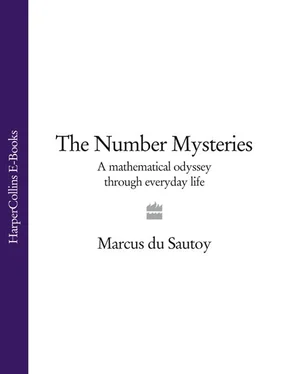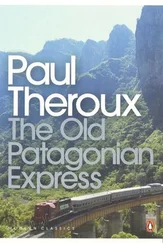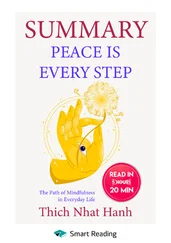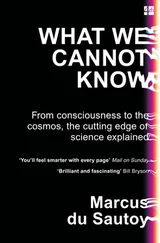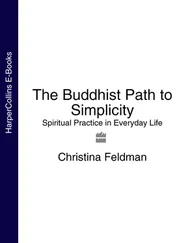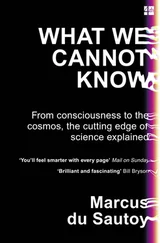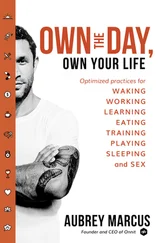It is this continually shifting music that creates the sense of timelessness that Messiaen was keen to establish—and he is using the same trick as the cicadas with their predators. Think of the cicadas as the rhythm and the predators as the chords. The different primes 17 and 29 keep the two out of sync, so that the piece finishes before you ever hear the music repeat itself.
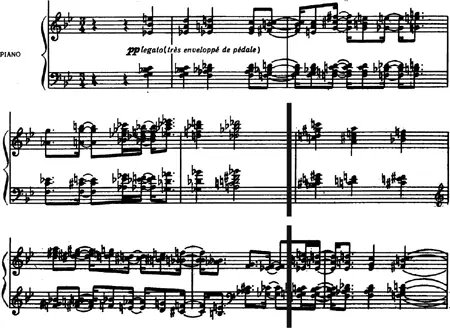
FIGURE 1.04 Messiaen’s ‘Liturgie de Crystal’ from the Quatuor pour la fin du temps. The first vertical line indicates where the 17-note rhythm sequence ends. The second line indicates the end of the 29-note harmonic sequence.
Messiaen wasn’t the only composer to have utilized prime numbers in music. Alban Berg also used a prime number as a signature in his music. Just like David Beckham, Berg sported the number 23—in fact he was obsessed by it. For example, in his Lyric Suite , 23-bar sequences make up the structure of the piece. But embedded inside the piece is a representation of a love affair that Berg was having with a rich married woman. His lover was denoted by a 10-bar sequence which he entwined with his own signature 23, using the combination of mathematics and music to bring alive his affair.
Like Messiaen’s use of primes in the ‘Quartet for the End of Time’, mathematics has recently been used to create a piece that although not timeless, nevertheless won’t repeat itself for a thousand years. To mark the turn of the new millennium, Jem Finer, a founding member of The Pogues, decided to create a music installation in the East End of London that would repeat itself for the first time at the turn of the next millennium, in 3000. It’s called, appropriately, Longplayer .
Finer started with a piece of music created with Tibetan singing bowls and gongs of different sizes. The original source music is 20 minutes and 20 seconds long, and by using some mathematics similar to the tricks employed by Messiaen he expanded it into a piece which is 1,000 years long. Six copies of the original source music are played simultaneously but at different speeds. In addition, every 20 seconds each track is restarted a set distance from the original playback, but the amount by which each track is shifted is different. It is in the decision of how much to shift each track that the mathematics is used to guarantee that the tracks won’t align perfectly again until 1,000 years later.
You can listen to Longplayer at http://longplayer.orgor by using your smartphone to scan this code.
It’s not just musicians who are obsessed with prime numbers: they seem to strike a chord with practitioners in many different fields of the arts. The author Mark Haddon only used prime number chapters in his best-selling book The Curious Incident of the Dog in the Night-time . The narrator of the story is a boy with Asperger’s syndrome called Christopher who likes the mathematical world because he can understand how it will behave—the logic of this world means there are no surprises. Human interactions, though, are full of the uncertainties and illogical twists that Christopher can’t cope with. As Christopher explains, ‘I like prime numbers … I think prime numbers are like life. They are very logical but you could never work out the rules, even if you spent all your lifetime thinking about them.’
Prime numbers have even had an outing in the movies. In the futuristic thriller Cube , seven characters are trapped in a maze of rooms which resembles a complex Rubik’s cube. Each room in the maze is cube-shaped with six doors leading through to more rooms in the maze. The film begins when the characters wake up to find themselves inside this maze. They have no idea how they got there, but they have to find a way out. The trouble is that some of the rooms are booby-trapped. The characters need to find some way of telling whether a room is safe before they enter it, for a whole array of horrific deaths await them, including being incinerated, covered in acid and being cheese-wired into tiny cubes—as they discover when one of them is killed.
One of the characters, Joan, is a mathematical whiz, and she suddenly sees that the numbers at the entrance to each room hold the key to revealing whether a trap lies ahead. It seems that if any of the numbers at the entrance are prime, then the room contains a trap. ‘You beautiful brain,’ declares the leader of the group at this piece of mathematical deduction. It turns out that they also have to watch out for prime powers, but this proves beyond the clever Joan. Instead they have to rely on one of their number who is an autistic savant, and he turns out to be the only one to make it out of the prime number maze alive.
As the cicadas discovered, knowing your maths is the key to survival in this world. Any teacher who is having trouble motivating their mathematics class might find some of the gory deaths in Cube a great piece of propaganda for getting them to learn their primes.
Why do science fiction writers like primes?
When science fiction writers want to get their aliens to communicate with Earth, they have a problem. Do they assume that their aliens are really clever and have picked up the local language, or that they’ve invented some clever Babelfish-style translator that does the interpreting for them? Or do they just assume that everyone in the universe speaks English?
One solution that a number of authors have gone for is that mathematics is the only truly universal language, and the first words that anyone should speak in this language are its building blocks—the primes. In Carl Sagan’s novel Contact , Ellie Arroway, who works for SETI, the Search for Extra-Terrestrial Intelligence, picks up a signal which she realizes is not just background noise but a series of pulses. She guesses that they are binary representations of numbers. As she converts them into decimal, she suddenly spots a pattern: 59, 61, 67, 71 … all prime numbers. Sure enough, as the signal continues, it cycles through all the primes up to 907. This can’t be random, she concludes. Someone is saying hello.
Many mathematicians believe that even if there is a different biology, a different chemistry, even a different physics on the other side of the universe, the mathematics will be the same. Anyone sitting on a planet orbiting Vega reading a maths book about primes will still consider 59 and 61 to be prime numbers because, as the famous Cambridge mathematician G.H. Hardy put it, these numbers are prime ‘not because we think so, or because our minds are shaped in one way rather than another, but because it is so, because mathematical reality is built that way’.
The primes may be numbers that are shared across the universe, but it is still interesting to wonder whether stories similar to those I’ve related are being told on other worlds. The way we have studied these numbers over the millennia has led us to discover important truths about them. And at each step on the way to discovering these truths we can see the mark of a particular cultural perspective, the mathematical motifs of that period in history. Could other cultures across the universe have developed different perspectives, giving them access to theorems we have yet to discover?
Carl Sagan wasn’t the first and won’t be the last to suggest using the primes as a way of communicating. Prime numbers have even been used by NASA in their attempts to make contact with extra-terrestrial intelligence. In 1974 the Arecibo radio telescope in Puerto Rico broadcast a message towards the globular star cluster M13, chosen for its huge number of stars so as to increase the chance that the message might fall on intelligent ears.
Читать дальше
